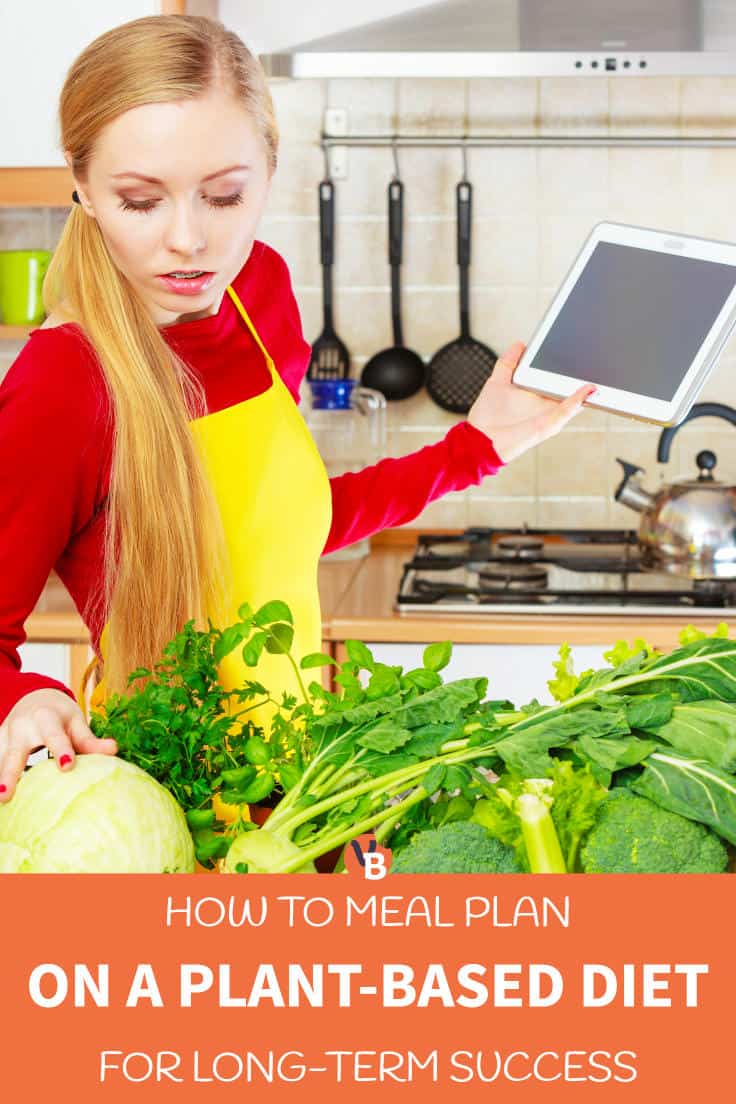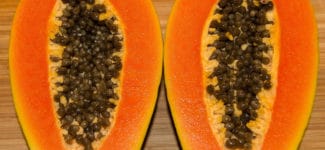Well, don’t worry – I know it sounds like another painful chore to add to your already crowded list, but meal planning can make your life a whole lot easier in the long run.
I’ll show you some simple meal planning guidelines to follow that’ll save you time, money, and have all the other neighborhood moms wanting to know your secret.
Let’s get started!
What Is Meal-Planning and Why Should You Do It?
To put it simply, meal planning is organizing a list of meals you’d like to eat over the next several days.
Once your list is complete, you’re ready to go shopping for the ingredients you’ll need for your chosen meals.
I like to do this over the weekend (on my days off) – so I don’t feel rushed and I’m able to get everything I need in one trip.
And to make things easier during the week, set aside some time to prep as much of the ingredients as you can beforehand, so they’re ready to use the day you need them.
Meal planning is not a one-size-fits-all technique, so give it some time to figure out how to make it work best for you. However you choose to do it, I think you’ll enjoy its benefits!
The Benefits of Meal Planning
Let’s cover what you can expect once you’ve implemented meal planning into your routine.
Saves You Time
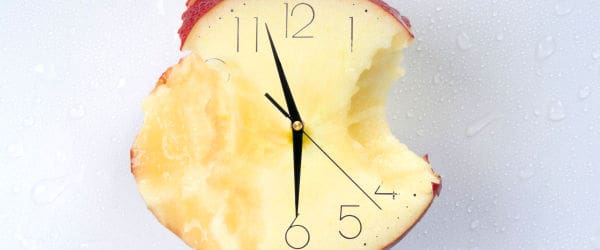
Time is a hot commodity these days, and meal planning can save you time in a variety of ways!
Less Time Shopping:
- You’ve already determined everything you need, so all you have to do is follow your list. Having a list keeps you focused on why you’re there, so you can get in and get out – fast!
- In case you find yourself wandering the isles looking to satisfy a craving, we’ve covered how to stop food common cravings you might experience on a plant-based diet.
- Knowing what you need for the next several days means less trips to the grocery store.
Less Time in the Kitchen:
- If you spend a little time on your day off batch cooking ingredients to use in your scheduled meals, this can decrease your overall time in the kitchen over the next several days.
- No more digging through the cupboards, trying to find something that looks good to eat.
- Using leftovers for the next day – if you make extra, you’ve got a meal for tomorrow ready to go!
Less Time Stressed
- Anything we can do to limit stress is worth doing! Having multiple days of meals already decided can be a huge sigh of relief.
- Eating a diet rich in whole plant-foods has demonstrated positive effects on mood. I can attest to the positive mood shift first-hand from eating more plant foods!
Less Time Sick
- Also, eating a diet high in whole plant-foods appears to reduce the risk of a variety of health problems. I guess you’ll have to find another excuse to use your paid-time-off from work!
- Diets high in fruits and vegetables benefit the immune system.
Saves You Money
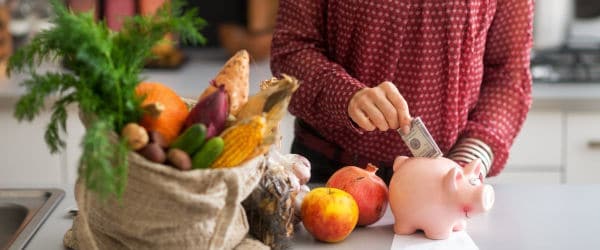
You’ll be amazed at how affordable eating a plant-based diet can be – especially when you take advantage of meal planning.
- Whole foods like rice, beans, legumes, and potatoes are among the most affordable foods available. These are super-star foods when it comes to batch cooking and meal planning.
- Meal planning encourages more home-cooked meals versus eating out.
- Cut your food bills by focusing on whole food ingredients like fruits, vegetables, and healthy starches.
- There’s plenty more ways you can save money and eat well on a plant-based diet.
Add More Variety to Your Diet
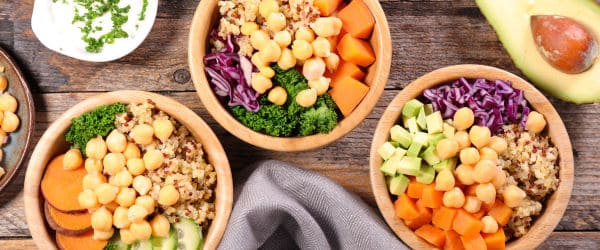
It’s easy to get into a rut of eating the same meals week after week. Pizza one night, burgers the next, taco Tuesday, and a few nights out summed up a good chunk of my diet at one time.
Even though I was only eating a handful of different meals, I didn’t question my diet because that’s just what everyone else I knew ate.
With a plant-based diet, there are so many delicious options to choose from! Once I began to change the way I ate, I started to get excited about finding new recipes to try.
I quickly realized all the meals I enjoyed growing up could also be made in a plant-based version. So, not only could I eat all my old favorites, but I was now enjoying an abundance of new recipes and flavors that I didn’t even know existed!
Supporting my personal experience, one study found that meal planning was associated with healthier diets and may encourage more varied home-cooked meals.
I believe one reason for this is meal planning gets us to put more focus and attention on the types of meals we eat.
We all try to eat healthy but without any effort into planning our meals, we succumb to whatever is fast and easy.
Make it a goal to find one new healthy recipe to try at home each week. This is a great way to make meal planning fun while adding more variety to your diet.
Reduces Food Waste
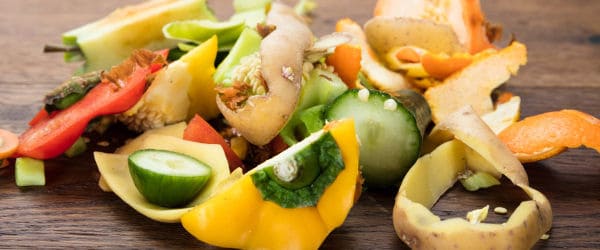
Wasted food is a big problem – regardless of where you live. A 2012 report published by the Natural Resources Defense Council, estimates that up to 40 percent of food is wasted each year in America.
With roughly 1 in every 6 people worldwide not getting enough food to be healthy, this is an issue we can all take part in the solution.
If you’re eating a plant-based diet – good on you! You’ve already made a big difference with that one decision alone.
Researchers from Lancaster University published a study that found our current crop production would adequately provide enough healthy food for the predicted 9.7 billion world population in 2050.
With an estimated 34% of human-edible crops being fed to livestock – as more people shift to a plant-centered diet, we can potentially free up much of that food to feed hungry people.
Meal planning is an additional step we can take to reduce our food waste. By only shopping for the items needed for your scheduled meals – there’s less chance of food spoiling.
When you plan ahead and stick to your list, you’ll be surprised at how much money you save by not throwing away so much wasted food.
Get the Family Involved in Planning Healthy Meals
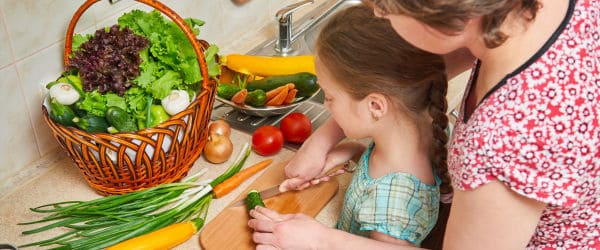
If anything, you can get kids excited about eating healthy – it’s giving them a part in the planning and creating process.
I remember as a kid loving to help in the kitchen. Kids want to feel empowered and by getting them involved, their confidence and desire to try new foods grows. They’ll take pride in eating and sharing the healthy meals they took part in preparing.
Even before the meal prep begins, sit down and brainstorm meal ideas with the whole family.
This way, everyone has a say in what will be on the menu, leading to more satisfied tummies. Once the menu is determined, take the whole family shopping and allow the kids to help.
Not only can this be quality time together, but also an opportunity to teach important life skills (money management, reading labels, recognizing plant foods, etc.).
Eating together as a family indicatively leads to several positive outcomes for everyone involved. Not only do family meals promote stronger family bonds but also generates:
- stronger parent-child communication;
- a sense of structure and safety for children; and
- improved academic performances, and decreases high risk behaviors such as drug use.
Meal planning is one way to help bring the family together to promote healthy nutrition and stronger relationships.
How Many Days to Plan Ahead
This’ll be one of the first questions to ask yourself. How many days do you want to plan meals for? What amount of planning will fit best with your schedule?
Let’s look at a few factors to consider when starting out.
What’s Your Schedule Like for the Week?

Take a moment to think about the week ahead – how busy does it look? This can help you determine how many days you want to plan for.
When you’ve got a busy week, planning and shopping for all seven days might relieve some of the stress when mealtime rolls around.
If you’ll have time to make it back to the grocery store mid-week – perhaps planning for three or four days at a time will work best.
Don’t be afraid to experiment with different lengths of time until you find your sweet spot.
Meal planning is an art and not everyone will do it the same way. The important thing is to stay flexible and allow meal planning to complement your unique schedule in the best way possible.
Let’s take a look at what a three-day approach vs. a seven-day approach has to offer:
The Three-Day Approach
Smaller Grocery Bills per Trip – but More Trips
Some people like breaking their grocery bills down to cover three days at a time. This keeps costs down but requires more visits to the store.
More Flexibility
Planning for three days vs seven offers more flexibility. Some people don’t like committing to a full week of meals – let’s face it – cravings can change in an instant!
Potentially Less Food Waste
Even the best meal planners can fall victim to food spoilage! Buying food for three days helps to limit the chances of food spoiling before you can use it.
The Seven Day Approach
Less Trips to the Grocery Store
When you’re busy, the last thing you’ve got time for is standing in line at the grocery store. Making one trip for the whole week can be a major time saver.
Fewer Temptations
Besides the pain of waiting in line, the longer we spend time in the grocery store, the more likely we are to leave with some sort of snack food. A great way to beat temptations for junk food is to avoid spending time where they’re located!
Potential Cost Savings
A benefit to buying more food at one time is an opportunity for case discounts. Some grocery stores offer discounts for buying a whole case of something, such as bananas, rice, beans, or canned vegetables.
Another option for finding deals on larger quantities of food is wholesale or warehouse stores, such as Costco. They offer larger quantities of many items at a discounted price.
So, you can save both time and money by using this meal planning approach.
Use a Printable or Erase Board Meal Planning Template
Take advantage of printable or dry erase meal planning templates. They come in a variety of styles and materials including paper or dry-erase magnets that stick to your refrigerator.
I’m old-school but even I have found these templates useful for keeping my planning organized.
My favorite setup is to have a dry-erase planner on the fridge as well as an electronic planner in my smartphone.
The planner on the fridge makes it easy to see what meals are coming up this week as well as quickly jot down ideas for next week.
Once it’s time for the next grocery trip, I can transfer the plan on the fridge into my phone, so I’ve got it with me on the go!
To get some quick inspiration for a simple meal planning system, check out this video from The Minimal Mom and adapt it to a plant-based eating pattern:
There are many options available so look around online or at a local department store to find a planner that fits your style.
Invest in a Slow Cooker, Crock-Pot, or Instant Pot
To make meal planning even easier, consider investing in one of these great time-saving gadgets. Let’s look at how they can complement your meal planning efforts:
Slow Cooker / Crock Pot
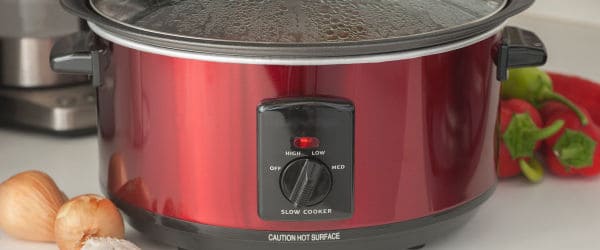
These great appliances allow your meals to practically cook themselves. From soups and stews to lasagna or mashed potatoes, you can toss in your ingredients, put on the lid, and come back to a perfectly cooked meal.
How can a slow cooker or crock pot help you with meal planning?
- Low maintenance – ideal for busy schedules
- Great for batch cooking – enough for multiple meals
- Minimal prep work
- Makes eating nutritious meals easy and convenient
Instant Pot
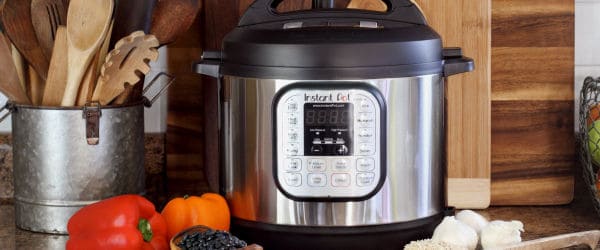
Introduced in 2010, the Instant Pot has become a household favorite around the world. I have friends and family members that swear by the instant pot for it’s ease and versatility.
This handy appliance can do the work of a slow cooker, pressure cooker, rice cooker, steamer, cake maker, and more!
You can even set a timer, so it begins cooking at just the right time in order to be done and ready for when you get home from work.
How can an Instant Pot help you with meal planning?
- Low maintenance – ideal for busy schedules
- Extremely versatile – use for slow cooking or as a pressure cooker when you want a meal fast
- Programmable to start cooking while you’re at work
- Minimal prep work
- Great for batch cooking enough for multiple meals
- Makes eating nutritious meals easy and convenient
Any appliance that makes life easier is a winner in my book – and any of the above-mentioned appliances do just that!
Whether you have a busy lifestyle or not – I’d highly recommend adding one of these tools to your kitchen.
Make a Collection of Your Favorite Plant-Based Recipes
A recipe notebook or meal-planning binder is a perfect way to keep all your favorite recipes organized.
Instead of having several recipe books taking up space, one recipe binder saves on shelf space and time searching through all those books.
In your binder or notebook, create sections for breakfast, lunch, dinner, and snacks. This will make it easy to find the perfect recipe or meal idea for any situation.
Now start building your personalized recipe database. Go through all your old recipe books and transfer all the best recipes into your binder.
You can also take advantage of great online resources such as our recipe roundups.
Every time you try a new recipe that you enjoy, add it to your binder or notebook for future use. Over time, you will have more delicious recipes than you know what to do with!
Having a wide range of delicious meal options to choose from – that’s when meal planning gets fun!
Use an App
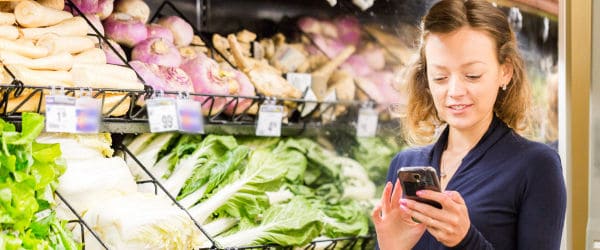
For even more support with your meal planning endeavors, put your smart phone to use and take advantage of these helpful apps:
21 Day Vegan Kickstart
The Physicians Committee for Responsible Medicine’s 21-Day Vegan Kickstart app offers plant-based meal plans, recipes, and advice from real nutrition experts!
Based on decades of nutrition research, the 21-Day Vegan Kickstart is designed to help you succeed in reaching your diet and health goals.
Food Monster
Described as the “biggest, baddest, yummiest vegan food app”, One Green Planet’s Food Monster is sure to impress!
With over 8,000 plant-based recipes to enjoy, you’ll also receive community support with helpful tips and answers to questions you may have.
Green Kitchen
The Green Kitchen app offers a variety of vegan and vegetarian recipes, shopping lists, and even timer notifications when your food is ready. If you’re an Apple user, this app could be a great addition to your recipe tool-belt.
Forks Over Knives
With over 400 recipes for you to choose from, the Forks Over Knives app is great for any aspiring plant-based foodie!
Step-by-step instructions, shopping lists, and a user-friendly design make this app a must-have.
Even if you don’t use a smart phone, you can still take advantage of these great apps on your desktop or laptop computer!
Use Pinterest

If you’ve never used Pinterest, you may want to start! It’s a great online tool for collecting and organizing anything that interests you.
So, if you’re not a fan of making a recipe binder, you can use Pinterest to do the same thing online – and it’s free!
All you have to do is create an account and you’re ready to start using Pinterest to help with meal planning. Here’s how in a nutshell:
Create Category Boards
You can set up your boards however you like, but I’d suggest doing it in the same way we talked about setting up a recipe binder. Create breakfast, lunch, dinner, snacks, and menu plan boards to keep all your recipes organized.
Search for Recipes
I’m always amazed at the vast amount of terrific recipe ideas I find on Pinterest. It’s truly an amazing resource for accessing unique and creative ways to make and enjoy plant-based meals.
So, once you start finding recipes you want to try (and it won’t take long), just pin that recipe to the appropriate board.
Using the search feature, simply type in the name of your favorite meals or even something as general as “healthy vegan recipes”.
You can even narrow it down to a specific ingredient that you’d like to use, for example, “vegan kale recipes”.
There will be no shortage of delicious recipes for you to try. I don’t know what it is, but something about the visual appeal of food on Pinterest makes me want to try every recipe!
Plan Your Meals
Ok, so once you’ve filled up your boards with plenty of delicious plant-based recipes, you can start to plan your meals.
Move (or re-pin) the recipes you want to make for the next several days into your Meal Planning board.
Go through the ingredients of each recipe and make your shopping list. Now pick up your groceries and you’ve just successfully meal-planned using Pinterest!
It’s great to experiment with different meal planning methods, so I hope this will give you another helpful option to try!
Find Helpful Cookbooks

Now maybe apps and websites aren’t your thing – maybe you like a good old-fashion, hold-in-your-hand book!
I can definitely relate to this – I’ll choose a hard cover book over an e-book any day of the week and twice on Sunday!
I personally like the look of having a few recipe books on the shelf. So, if you’re like me, finding a couple books that inspire healthy creations in the kitchen could be a great idea.
If you’re having a hard time finding a good cookbook to get started with – we’ve got you covered!
Check out our roundups of:
- the 12 Best Vegan Cookbooks for Beginners to Start off Right; and
- 11 Vegan Slow Cooker Cookbooks You Need to Know About.
Let us know in the comments section if you’ve got a favorite plant-based cookbook that you recommend!
Take Inventory of Your Refrigerator, Freezer and Pantries
Before you start planning your meals for the next several days, be sure to take inventory of what you already have on hand.
This can save you money and make it easier to decide which types of meals to prepare in the coming days.
I used to be notorious for letting food spoil. I’d find it pushed to the back of the fridge because I’d get additional groceries before I had eaten everything from my last shopping trip!
Now I make a point to go through everything I had previously bought before I make another trip to the store.
This saves me time, money, and that feeling of frustration from wasting food. It also can be a fun way to challenge yourself to make a new dish out of the few random ingredients you have left in your kitchen.
Let’s say you’ve got tomatoes and kale left over from your last shopping trip. Go to Pinterest and search “tomato kale” to find great recipes that include those ingredients.
Get into the Habit of Meal Prep and Batch Cooking
Of all the tips and tricks out there to make eating healthy more convenient – meal prep and batch cooking are at the top of the list!
If you only remembered one thing from this article, that’d be a good part to remember.
Meal Prep
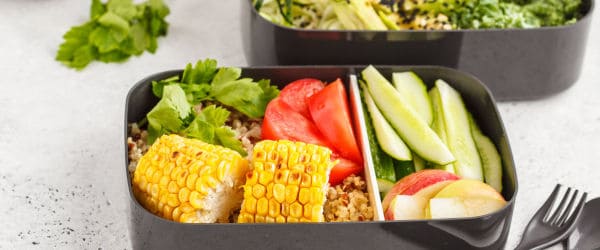
Meal prep is simply preparing some or all your ingredients ahead of time.
This can be as simple as pre-washing or pre-cutting fruits, veggies, salads, or anything else.
Or pre-cooking rice, beans, or potatoes ahead of time and keeping them in the fridge until you plan to eat the next day. Then it’s just a quick re-heat and you’re good to go!
Batch Cooking

To take it even further, batch cooking is prepping large quantities of certain ingredients that you can use throughout the week in multiple meals.
It’s common to do this with ingredients that normally add the most amount of time to the cooking process, such as rice, beans, lentils, and potatoes.
You can also batch cook whole meals, like soups, chili, or stews. This is where a slow cooker comes in handy!
And once you’re done, just store it in the fridge for use throughout the week or in the freezer for long term storage.
Commonly experienced benefits from batch cooking include:
- Reduces overall time preparing meals throughout the week
- Saves money
- Encourages healthier eating habits
- Reduces food waste
Overall, it’s a great way to maximize the efficiency of meal planning and reduces the stresses of daily cooking. Give it a try and let us know in the comments section, how meal prep and batch cooking has helped you!
Have a Backup Plan Ready
Things don’t always go as planned, so it’s good to have a plan B in case something unexpected comes up.
Maybe the power goes out, or you get stuck in a late meeting at work and don’t have time to prepare the scheduled meal. We’ve all been there!
The good news is we can still have a healthy, affordable meal if we have a backup plan in order! I want to discuss a few ideas that can help you plan for the unexpected.
Keep Backup Meals in the Freezer
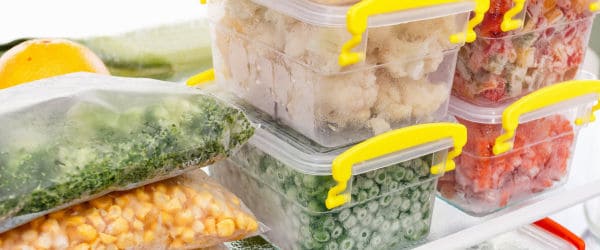
This can be a batch of your family’s favorite soup, chili, enchiladas, or lentil loaf.
Whatever your family likes, it’s recommended to have at least two or three day’s worth of backup meals ready in the freezer. Just warm it up and dinner is served!
Keep Canned Goods and Other Non-Perishable Items on Hand
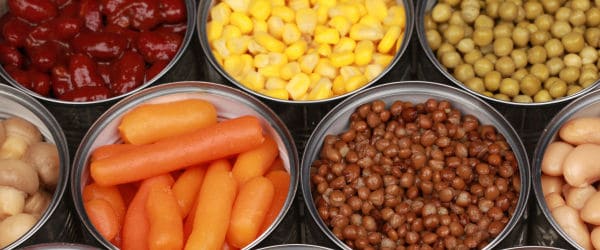
Canned beans, rice, and soups are great fallback options that can be made into a meal in minutes.
Toss some canned beans, rice, cilantro, shredded lettuce, salsa, and avocado into a bowl and you’ve got a healthy plant-based meal ready to go!
Use Your Batch Cooked Ingredients
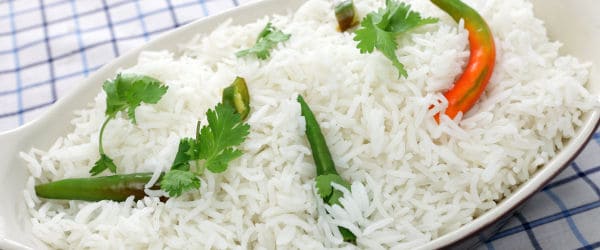
If you have a supply of batch cooked ingredients already in the fridge, make a quick impromptu meal based around that.
That’s the beauty of meal prep and batch cooking – you’ve always got something available in case something unexpected comes up.
Order In or Take Out!
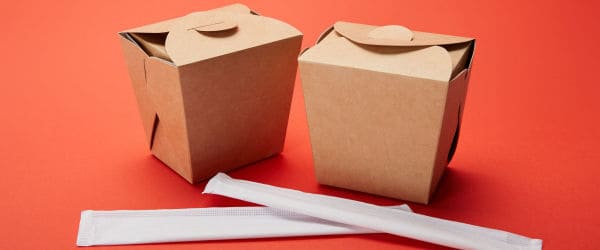
There are more and more plant-based options being offered at restaurants these days.
Call around to local restaurants and ask what plant-based options they offer. You can also check their website, as most restaurants post their menus online.
Write down a list of your family’s top choices and if something comes up – you’ve got it covered!
Look into Grocery Delivery Services
These days it seems you can get anything delivered to your door – including groceries!
That’s right, you don’t even need to leave the house so check grocery shopping off your to-do list.
To keep up with the times, many grocery stores are now offering delivery services.
If you don’t mind spending a few extra bucks or letting someone else pick out your produce, this can be a big time-saver.
Check with your local grocery stores to see if this a service they offer.
Places to Order Groceries Online
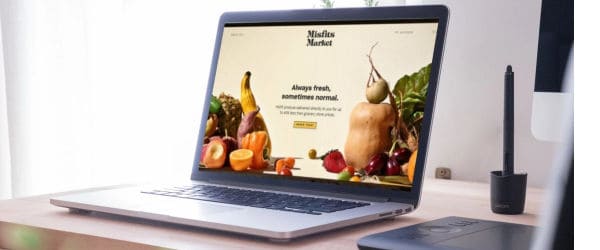
If you can’t find a grocery store near you to deliver, there are also several online services that’ll do the same thing.
If you’re new to the online grocery delivery scene, here are a few options to consider:
- Farmbox Direct
- Farm Fresh To You
- Imperfect Produce
- Misfits Market
- Amazon
- Ebay
- Instacart
- Shipt
- Peapod
Create a Shopping List
Santa isn’t the only one that needs a list – so do you!
If you don’t already use a shopping list, I encourage you to give it a try. You’ll avoid making that second trip to the store to pick up the lentils you forgot the first time.
And it’s just a great way to stay focused on what you need while you’re shopping.
Personally, I’m a pen and paper kind of guy – I like the satisfaction of crossing each item off my list.
There’s a wide variety of printable shopping list templates you can find online.
But if you’re trying to go paperless, here are a few other ways you can go about it:
- Notepad app on your mobile phone
- Text your list to yourself!
- Grocery shopping list apps
- Meal Planning Apps
Keep Your Shopping List Handy so You Can Add to It

The best kind of shopping list is the one you use! Have you ever gotten to the store, only to find you left the list at home? – guilty!
If you have trouble keeping track of a piece of paper, it may be to your advantage to keep your list on something you always carry with you.
This could be a notepad, journal or, of course, your mobile phone!
Since most people these days can’t go anywhere without their phone, this seems to be the most common method.
It’s easily accessible, which makes it convenient for adding new items whenever you think of something new that you need to pick up.
As I’m sure you know, there are plenty of ways to carry around a list.
The goal is to find one that works for you and makes your shopping experience more efficient. Let us know which way works best for you in the comments below!
What Produce Items and Foods to Consider
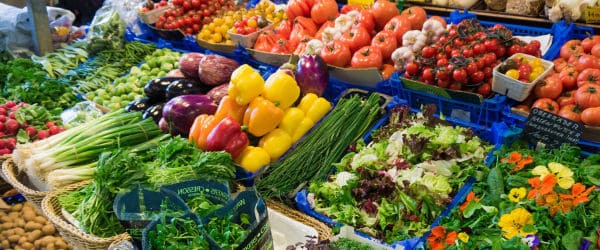
Once you’ve chosen your method of list-keeping it’s time to, well, make your list!
One way to simplify your list and reduce your grocery bill is to plan recipes that all contain some of the same ingredients.
For example, quinoa tacos on Monday, curried quinoa veggie bowl on Tuesday, and quinoa black bean burgers on Wednesday.
With this in mind, let’s go over some great options you can add to your next shopping list:
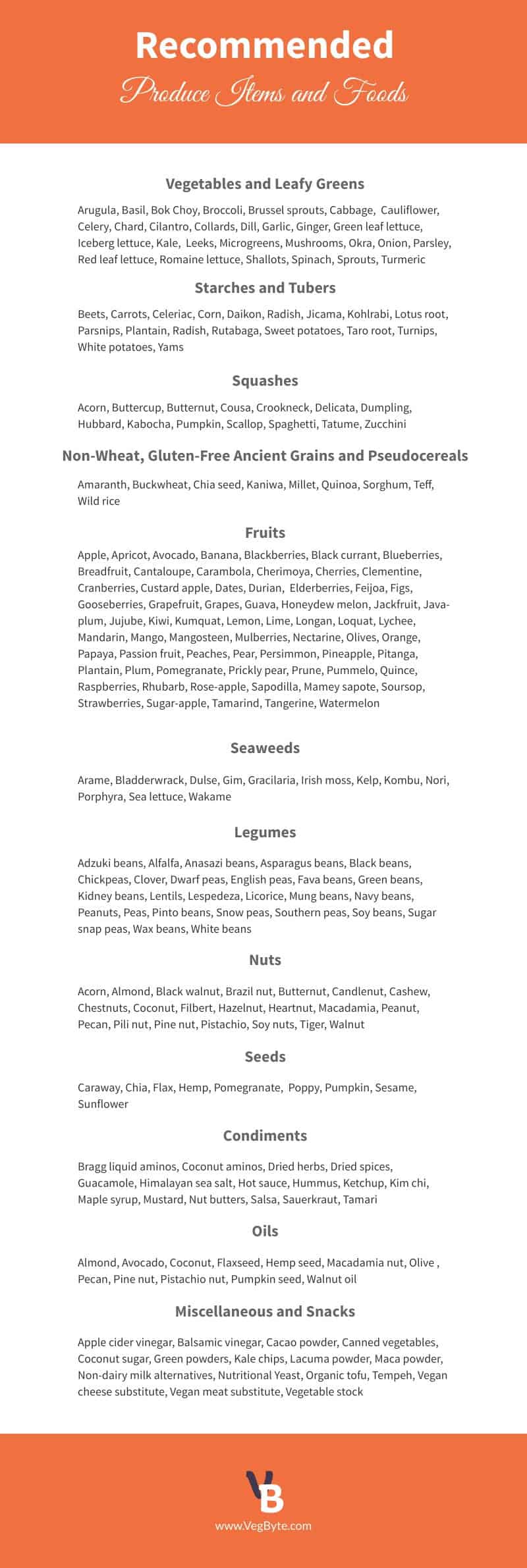
3 and 7-Day Meal Plans
It’s time to put it all together! To begin, it’s helpful to start out meal planning with simple recipes that share some common ingredients.
This way your meals are easy to prepare, and you have less items to buy at the store.
3-Day Meal Plan
To start with, below is what a 3-day meal plan can look like:
Breakfast
Lunch
- Warm Curried Quinoa Salad with Yoghurt Tahini Dressing
- Chile Relleno Zucchini and Quinoa
- Red Lentil Squash Stew
Snack
Dinner
7-Day Meal Plan
If you’re more of a long-term planner, scheduling for a whole week may be the way to go.
Using the same concept of simple recipes with some common ingredients, let’s review the 7-day meal plan below:
Breakfast
- EASY Blueberry Nice Cream
- Hippie Breakfast Bowl
- Chocolate Banana Oatmeal Pancakes
- Date Sweetened Apple Pie Oatmeal
- Chocolate Peanut Butter Protein Smoothie
- Chickpea Scramble Breakfast Bowl
- Tofu Scramble
Lunch
- Easy Black Bean Chili
- Smoky Tomato White Bean Soup
- Red Lentil and Spinach Pasta
- Peanutty Thai Quinoa Salad
- Risotto With Roasted Butternut Squash
- Pesto Farro and Baby Kale Salad
- Roasted Red Pepper Tomato Soup
Snack
- Peach Blueberry Sangria Mocktails
- Coconut Chia Pudding With Fresh Fruit
- Orange Creamsicle Smoothie Bowl
- 5-Minute Raw-Nola
- Mexican Falafel Bites
- Simple Cucumber Smoothie
- Baked Sweet Potato Chips
Dinner
- Burritos With Taco Meat and Queso
- Caramelized Onion and Portobello Mushroom Sliders With Fry Sauce
- One Pot Red Lentil Chili
- Slow Cooker Bean & Quinoa Chili
- Enchiladas With Cashew Sour Cream
- Quinoa Black Bean Tacos with Creamy Avocado Sauce
- Pasta e Fagioli
Wrapping Up
So, what do you think? Not so bad, right?
Meal planning can be the best friend you didn’t know you had. Helping you to save time, eat healthier, and lower your stress – what a pal!
I hope you’ve taken away some useful tips and become inspired to give meal planning a try.
Remember, it’s an ever-evolving process, so be open to making adjustments along the way, as you find what works best for your schedule.
Let us know what your best meal planning tips and tricks are in the comments section below.
Now get planning!

